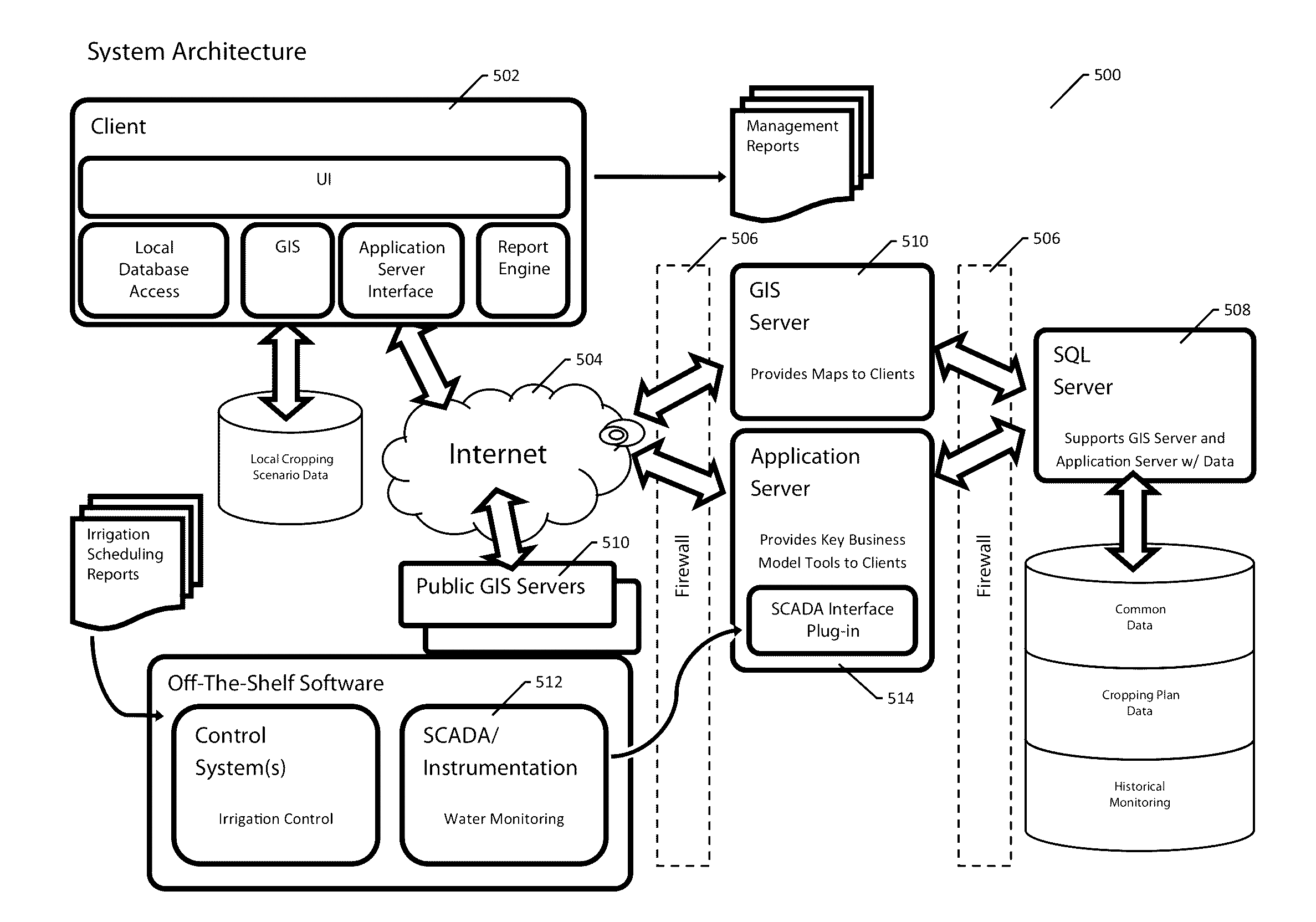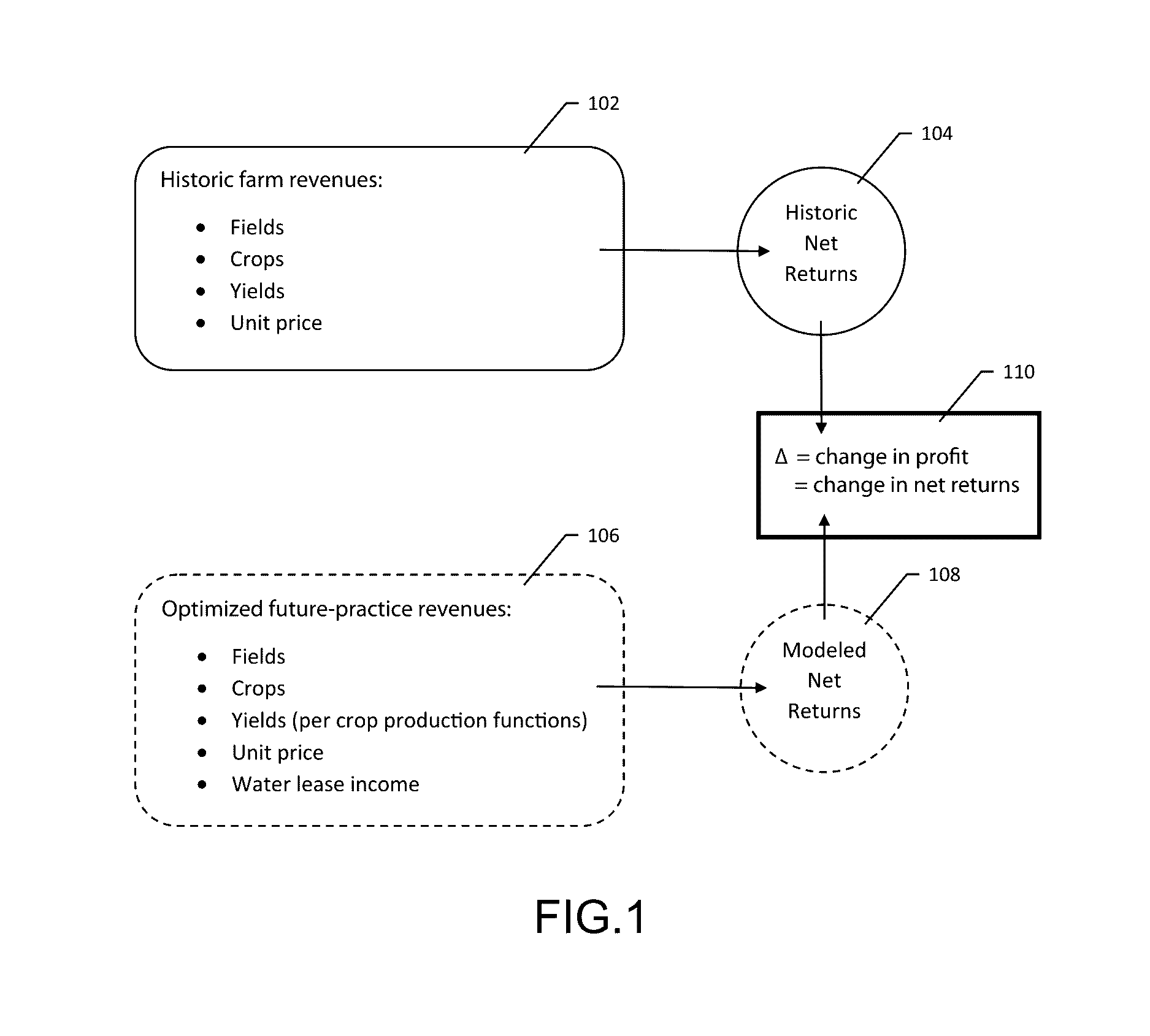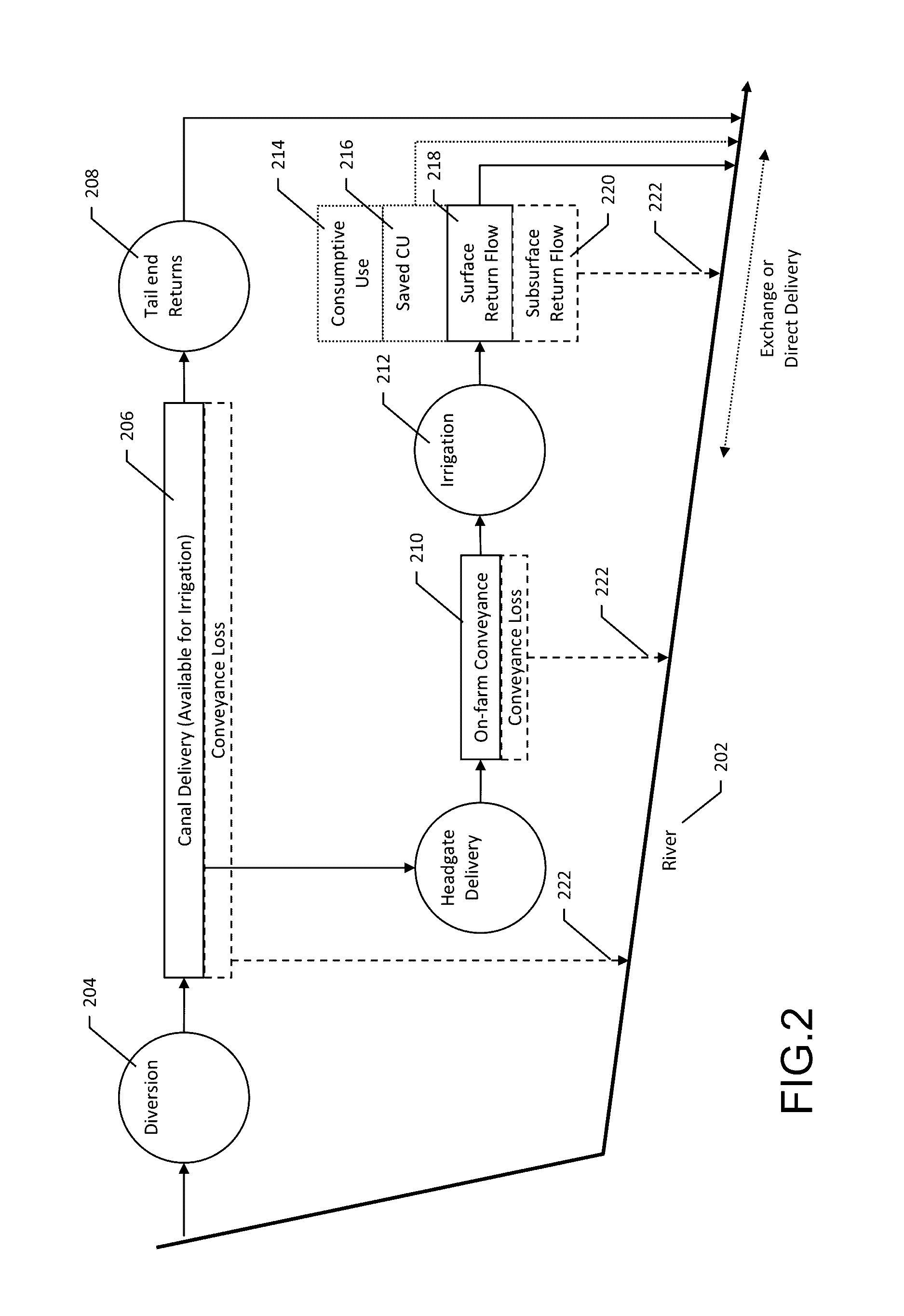System and method for conserving water and optimizing land and water use
a technology of land and water use and system and method, applied in the direction of liquid/fluent solid measurement, machines/engines, instruments, etc., can solve the problems of no systematic method or system, water rights owners may lose valuable water rights, and water rights under prior appropriation models are not always connected, etc., to facilitate water conservation, facilitate energy conservation, and electrical energy associated
- Summary
- Abstract
- Description
- Claims
- Application Information
AI Technical Summary
Benefits of technology
Problems solved by technology
Method used
Image
Examples
Embodiment Construction
[0147]A water balance of the river, canal, or the farm is a useful means of understanding the sources of and the destinations of water. FIG. 2 provides a conceptual rendering of a water balance analysis, from the river diversion downstream to the on-farm distribution system. Basically, what this illustrative graphic shows is what happens to water once it is diverted from the river 202 into a ditch or canal 206 for irrigation purposes. In many ditch company operations, the character of the water changes significantly as one moves downstream in the canal. Colloquially, some would say that the “color” of the water changes; a reference to where the water came from, or where it is bound, or its decreed use.
[0148]After diversion into an earthen canal, the diverted flow immediately begins to diminish because of conveyance losses, the most notable of which is seepage. Other losses are attributable to phreatophytes and evaporation from the water surface. Seepage can be quite significant espe...
PUM
 Login to View More
Login to View More Abstract
Description
Claims
Application Information
 Login to View More
Login to View More - R&D
- Intellectual Property
- Life Sciences
- Materials
- Tech Scout
- Unparalleled Data Quality
- Higher Quality Content
- 60% Fewer Hallucinations
Browse by: Latest US Patents, China's latest patents, Technical Efficacy Thesaurus, Application Domain, Technology Topic, Popular Technical Reports.
© 2025 PatSnap. All rights reserved.Legal|Privacy policy|Modern Slavery Act Transparency Statement|Sitemap|About US| Contact US: help@patsnap.com



